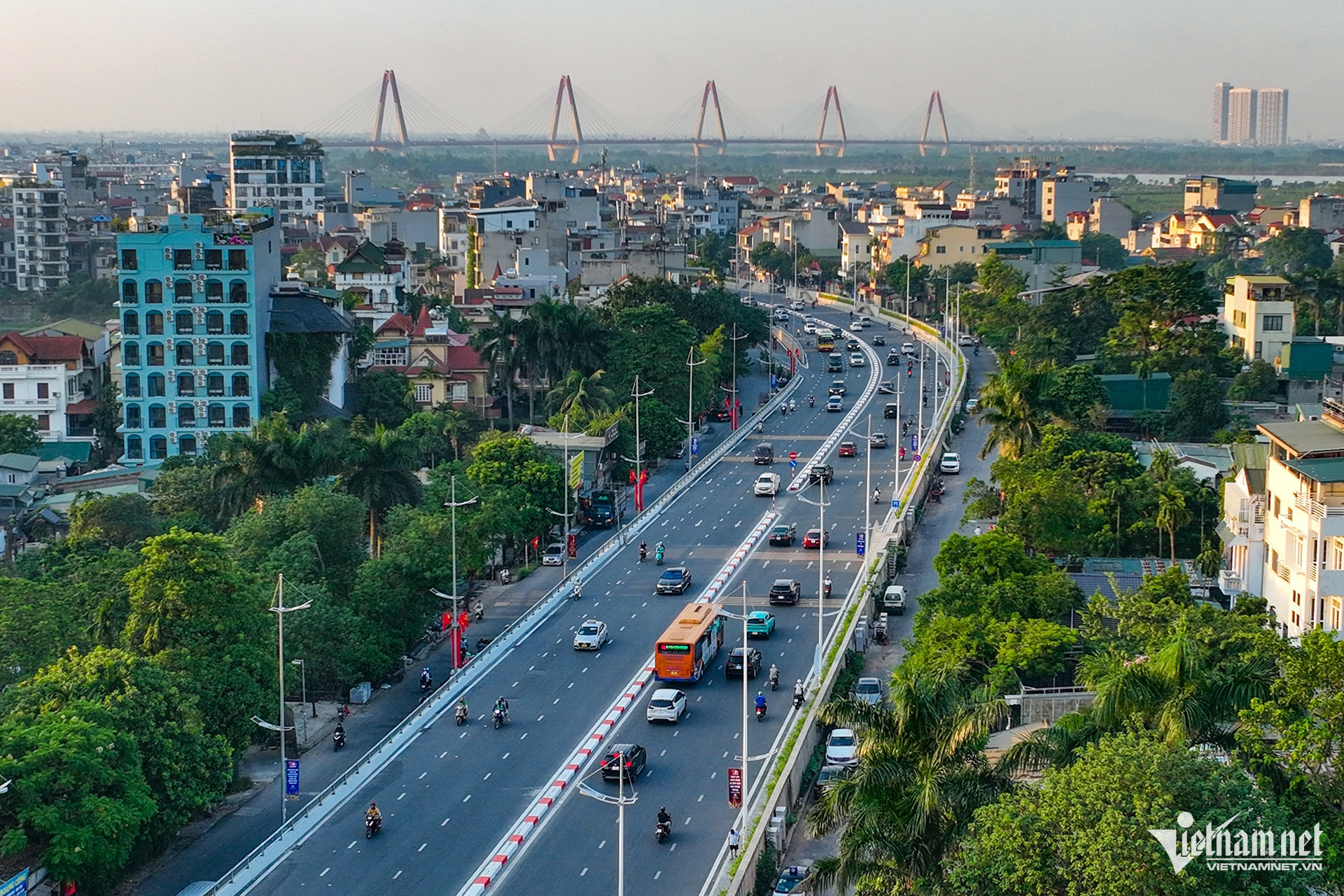If domestic manufacturers don’t act swiftly, low-quality, cheap electric bikes from abroad may flood Hanoi’s streets.
Amid government pressure to phase out gas-powered vehicles and reduce air pollution, Hanoi is racing against time to make the switch to cleaner transport.
No backing down on the green directive

Directive No. 20, issued by the Prime Minister on July 12, 2024, mandates Hanoi to enforce stronger measures against air pollution. In response, the city’s administration tasked relevant agencies with drafting an overarching plan to restrict gasoline-powered motorbikes from entering Ring Road 1.
While opinions remain divided, the directive is expected to be enforced quickly, consistent with the government’s “no retreat” resolve on environmental issues.
This directive echoes Hanoi’s 2017 Resolution 04/2017/NQ-HDND, which set targets to boost public transport usage in central areas to 30%-35% by 2020 and 50%-55% by 2030. However, after eight years, only 18% of travel demand is met by public transport, with just 2,000 buses in operation. Outdated diesel buses and manual ticketing still prevail.
Hanoi took 13 years to complete the Cat Linh–Ha Dong metro line, and its BRT network lacks proper integration. As a result, most residents still rely on personal motorcycles and cars.
A choked capital
With over 8 million vehicles - 1.1 million cars and 6.9 million motorcycles - plus 1.2 million from neighboring provinces, Hanoi has become one of the most congested and polluted cities globally. The average Hanoian owns one personal vehicle, overburdening the city’s aging transport infrastructure.
Many downtown roads now operate at 6-8 times their designed capacity. The Vietnam Chamber of Commerce and Industry (VCCI) estimates traffic jams cost Hanoi $1–1.2 billion annually in lost productivity and logistics expenses.
Hanoi also ranks among the world’s worst for fine particulate (PM2.5) pollution. A World Bank report states that 40% of residents are exposed to levels five times above WHO recommendations. Annual averages exceed national limits by 1.1 to 2.2 times, seriously endangering public health, especially among children and the elderly.
The Prime Minister’s directive aims to address this crisis, as Hanoi cannot continue to grow amid environmental degradation.
Motorbikes not the sole culprits
Despite popular belief, motorcycles are not the primary source of PM2.5 pollution. According to the World Bank, traffic accounts for only 25% of emissions.
The rest comes from industry (35%), agriculture (20%), household biomass burning (10%), open field burning (7%), and uncontrolled waste burning.
Meteorological factors like winter temperature inversions and urban heat island effects also hinder air dispersion, exacerbating pollution in the inner city.
Hanoi’s geography means it rarely experiences strong winds or storms to flush out pollution, unlike other cities like Ho Chi Minh City.
Thus, while banning gas motorbikes in Ring Road 1 may yield localized improvements, it won’t tackle the root causes of pollution unless all sources are addressed simultaneously.
This doesn’t mean retreating from reform, but rather pursuing smart, inclusive solutions that avoid hurting vulnerable groups.
Vietnam poised for two-wheeler EV boom
The World Bank predicts Vietnam will become a global hub for two-wheeler electric vehicles (E-2Ws). The country already ranks second globally after China.
In 2022, E-2Ws accounted for 12% of total two-wheeler sales. With falling prices and increasing brand competition, electric motorbikes are gaining popularity among urban consumers.
To accelerate adoption, policies must support affordable financing, establish safety standards, promote Li-ion batteries over lead-acid models, and gradually retire aging gas bikes to clear market space.
Depending on the policy trajectory, Vietnam could reach 12 million E-2Ws by 2035 (42% market share), or 16 million under a fast-growth scenario (56%).
The cost of transition
While the switch to electric is environmentally and economically beneficial in the long run, it comes with significant transition costs. Around 600,000 residents live within Hanoi’s Ring Road 1.
Replacing an equal number of motorcycles at $1,000 per vehicle would cost approximately $600 million - an enormous burden, especially for low-income households.
But the transition also presents a massive opportunity for domestic manufacturers. If they lag behind, subpar, cheap imports could dominate the streets.
Besides the financial cost, citizens face behavioral changes, limited charging infrastructure, fire hazards from batteries, and maintenance concerns. Vietnam's electric mobility infrastructure is not yet ready for mass conversion.
Moreover, many livelihoods depend on motorcycles - drivers, delivery workers, commuters from outer districts. Without support measures, a ban on gas bikes could harm hundreds of thousands of people.
Key logistical questions also remain: Will residents in Rings 2 or 3 have to leave their gas vehicles at the edge of Ring 1? How will traffic flow be maintained? Comprehensive connectivity in the transport network is essential.
Investing in public transit, not just banning the old
Hanoi must redirect resources toward public transportation. This includes adding more clean buses, expanding the metro, building intermodal transfer stations, and digitizing ticketing systems.
According to urban planning goals, Hanoi aims to complete 410 km of metro lines by 2035 and 616 km by 2045. These are critical objectives, but require accelerated and focused investment - not the slow, fragmented approach seen so far.
Transitioning to electric transport aligns with emissions reduction and improved urban living, but green policies must not be top-down mandates. Implementation must follow a clear roadmap, grounded in impact assessments and social equity - especially for the most vulnerable.
Hanoi must strike the right balance: not just “ban the old,” but also “build the new” - investing in real public transit solutions, helping citizens adopt clean technology, and tackling pollution at its roots.
Tu Giang